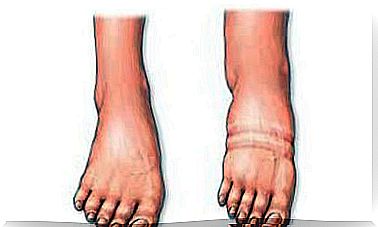Can The Brain Feel Pain?
Headache is the technical name for headache. But the head includes many structures, including the brain. Now, can the brain feel pain? In short, what hurts us when we have a headache?
The head includes the bones of the skull, the skin and muscles that it covers, the entire brain, and the venous and nervous structures that circulate there. The brain is one more organ of the brain and, therefore, only a portion of the head.
The origin of headaches is multiple. Sometimes there are trivial headaches, caused by a little fatigue or stress and nothing else. Other times, the headache is a sign of a serious illness, such as stroke.
To know if the brain can feel pain, we first have to consider whether or not there are pain receptors in the brain tissue. Areas of the body without these receptors are unable to produce pain.
The brain has no pain receptors
Pain receptors are called nociceptors. These are sensory structures, that is, they are associated with the possibility of feeling something. When a stimulus activates the nociceptor, there may be a sensation of pain.
Nociceptors are present in various tissues, but not in the brain. When these receptors are stimulated, for example by touching something hot, they transmit the pain signal to the brain through the spinal cord.
There are nociceptors outside our body, in the skin, and inside, in certain organs. There are also mucous membranes with these receptors and tissues such as muscle that contain nociceptors inside.
The brain, then, cannot feel pain. It will receive the information that comes to it from the nociceptors distributed throughout the body and it will interpret it, but it will not be brain pain. Its neighboring structures do have nociceptors, such as the meninges.
By not having pain receptors, the brain can be operated with local anesthesia, as is done in many neurosurgeries. The skull cap is opened and the brain is worked on with the patient awake, since the surgeon’s interventions do not cause pain there.

The brain cannot feel pain, but interprets it
As we have already advanced, the brain cannot feel pain, but it is in charge of interpreting the signals it receives from the nociceptors distributed throughout the body. For some neurologists, it is correct to say that the brain generates pain, because it is ultimately the one who tells us that something is hurting.
When a nociceptor detects a physical, thermal, pressure, or chemical change that can be harmful, it alerts the brain. Through the spinal cord the information goes up from the receiver and looks for an interpretation in the brain tissue.
The brain collects the data and emits a response, which is conditioned by who we are, that is, by what we have lived before and have learned. An order to be carried out will then be drawn up. If dangerous pain was detected, the order may be to remove your hand from the spot, move, jump, run, or perhaps hold on a little longer.
There are people who train for pain, as can be the case with boxers. The blows they receive are registered by the brain to gain experience. Faced with subsequent blows, the response is no longer the same, because the brain has accumulated information that allows it to decide better.
However, there are limits to pain that go beyond experience. Pain, precisely, is a defense mechanism that the body has to warn about health dangers. A good pain recognition system is what keeps us alive as a species.
So what does the headache mean?

Since we know that the brain cannot hurt, it is valid to ask why the head hurts. Well, the answer lies in the other structures of the skull.
The headache may originate in the skin of the head, in the meninges, or in the arteries of the skull. Also the neck muscles, with a cervical contracture, can cause it. The brain will interpret the signals from these structures and decide whether it is pain or not.
Blood flow is a frequent source of migraines. When circulation in the arteries or veins of the head is disturbed, nociceptors in the vessels signal the brain. For this reason, some migraine medications are based on the modification of vasoconstriction.
The brain can’t feel pain, but we can
The fact that the brain cannot feel pain does not mean that we are incapable of perceiving it. On the contrary, brain tissue connects us with the outside through pain perception and, at the same time, interprets our internal environment through the nociceptors of the organs. Ultimately, the brain cannot feel pain, but we, as a whole, can.









